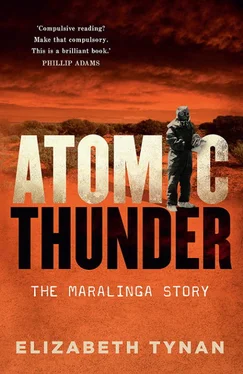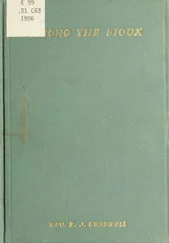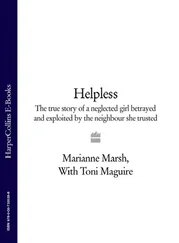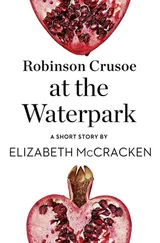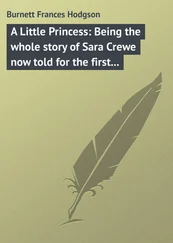During the years the Maralinga site was active, a total of about 35 000 military personnel spent time there. Most (about 25 000) were from the UK, bolstered by a smaller contingent of Australians and occasional attachments of military personnel from Canada, the US and New Zealand. All were male and physically fit and most were young. A significant number of the British and Australian personnel were doing National Service. The village built to accommodate people working at the site included a number of facilities intended to encourage camaraderie, such as a swimming pool, playing fields and a theatre. By the range commander’s account, it was a place of high morale: ‘Considering the isolation of the area, the very trying climatic conditions for part of the year, and the diversity of the groups that make up the population, morale has been, and continues to be, remarkably high. Much of this is due to the good ration scale, basic amenities provided, and the financial gain made by the majority serving in the area’.
Maralinga had been used for the 1955 Kittens tests and other non-nuclear tests, but the first major trial was Operation Buffalo, the longest series of major trials held in Australia. By this time, Penney had handed over day-to-day control of the Australian test program to his deputy William Cook, but for Buffalo he took the helm again himself. The series, held in September and October 1956, consisted of four atomic bombs, detonated in three different ways. Buffalo 1 and 4 were detonated from towers on the ground, while Buffalo 3 was dropped from an aircraft. Buffalo 2 was exploded at ground level, the only ground-level detonation in Australia, with its concomitant risks. The other major trial at Maralinga was Operation Antler in September and October 1957 which involved three bomb firings (two on towers and one from tethered balloons). After that an international moratorium on tests, and a revived relationship between the UK and the US, put an end to mushroom clouds tests in Australia.
Nothing says ‘Maralinga’ more than the startling image of a billowing atomic cloud rising from the desert plain. Buffalo 1 sent up the first mushroom cloud over Maralinga. While mushroom clouds are particularly associated with atomic weaponry, any large explosion will produce the same effect, though most non-nuclear explosions don’t come close to the power of an atomic bomb. Natural events like volcanic eruptions can also cause these distinctive clouds, although, of course, non-nuclear explosions tend not to be radioactive. In contrast, the detonation of an atomic device instantly creates a burst of intense gamma and neutron radiation. The cloud of an atomic explosion is filled with radioactive particles, the products of the fission process when the atoms are wrenched apart. These particles roil and swirl with the ground debris, all sucked upwards as the cloud interacts with the atmosphere. The blast also sends out a pressure or shock wave, which can cause damage to anyone or anything in the vicinity.
The height of a mushroom cloud is governed by the energy of the explosion and the atmospheric conditions at the time of the detonation. The mushroom shape forms about 10 minutes after detonation and may last for up to an hour. However, even when it has disappeared, radioactive particles remain in the atmosphere, blown by the wind and depositing fallout along the way. Fallout literally falls out of the sky. The fallout from the Maralinga mushroom clouds spread far and wide, depending upon the winds, the explosive yield and the method of detonation. The airburst test at Maralinga, Buffalo 3, produced less fallout because it drew up less material from the ground into the cloud. The yield from the Maralinga tests was far less than that from Mosaic G2, but it was still substantial, and it travelled the airways north and east.
Penney arrived at the site on 24 August 1956 and set the date for the first major test around 12 September, with the whole site to go on stand-by the day before. Rehearsals and other necessary activities got underway in earnest. Little did anyone know how protracted the wait would be. Day after day, the meteorological conditions were unsuitable. Day after day, scientists, journalists and politicians, invested in their different ways in the first Maralinga test, had to be patient. It was not easy. Questions in federal parliament and mocking stories in newspapers created uncertainty about the suitability of the site and the safety of nuclear weapons tests.
On 22 September the weather appeared to have stabilised, but an airman had ‘gone missing’ near the forward area. A search was organised. At 11 pm he wandered, footsore and dehydrated, into Eleven Mile camp, well to the south of the forward area, having walked 32 kilometres through the desert. By the time he was found to be safe and well, it was too late to go ahead and the test was again postponed.
After that drama, and endless frustrating delays, the all clear was given on 27 September. Operation Buffalo got underway. The first in the series, detonated from a 30-metre tower at One Tree, had a yield of 15 kilotonnes and was the most witnessed. When the long-delayed plane load of journalists arrived they were allowed to watch the awesome spectacle that is a nuclear bomb. The parliamentarians missed out. They had arrived the day before but were sent back because there was nowhere to stay overnight.
Buffalo 1 was the plutonium warhead for the future Red Beard tactical nuclear weapon, a smaller weapon than Blue Danube. The winds were still not right on the day it was fired, suggesting Penney felt that he couldn’t wait any longer. Certainly the Royal Commission found that the decision was probably made out of a desire to get the thing done, rather than to adhere strictly to the agreed firing conditions. As with the earlier major trials, the mushroom cloud rose higher than predicted – well over 11 000 metres instead of 8500 metres – in a huge, classic mushroom shape. The unexpected height of the cloud played havoc with fallout predictions and appeared to contravene the conditions for safe firing that had been agreed with the Australian Government, a serious problem. An RAF Canberra aircraft flew through the cloud to gather samples. Radiation experts quickly began surveying the contamination. The radioactive cloud headed due east.
Despite some qualms about the extent of fallout from the first blast, Operation Buffalo proceeded. Buffalo 2, detonated at 4.30 pm on 4 October at Marcoo, was the only British bomb test detonated at ground level and therefore the only weapons test to create a true bomb crater. The crater was 44 metres wide and 21 metres deep. John Moroney described Buffalo 2 as a ‘nuclear landmine’. It tested the Blue Danube device that Penney had designed so many years before. It was a much smaller device than Buffalo 1 – only 1.5 kilotonnes – and had a far less spectacular cloud that rose to less than half the height of Buffalo 1. Like Buffalo 1, though, its cloud headed due east towards the northern New South Wales coast. The device was detonated despite the fact that rain had been forecast within 800 kilometres and actually fell about 160 kilometres from ground zero. Rain in the aftermath of a test brings fallout with it; any rain in the contaminated area will likewise be contaminated. Again, the agreed firing conditions were transgressed. These now looked to be optional rather than firm requirements.
Buffalo 3 was an airdrop with an expected yield of 3 kilotonnes. The winds were still difficult, and the time for detonation was brought forwards slightly. The device, also of Blue Danube design, was dropped from a Valiant bomber at 3.27 pm on 11 October and exploded 150 metres above the Maralinga plain near the Kite test site, dropping its radioactive material around the restricted area, including near to Maralinga village. As planned, the fireball did not actually reach the ground, and the cloud rose to 4500 metres. Unexpectedly, demonstrating how primitive the forecasting methods were at that time, the radioactive cloud headed to the south, drifting over Adelaide.
Читать дальше
